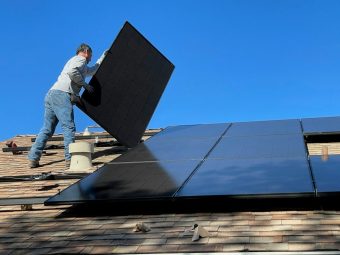
It is a well-known fact that Australia is one of the largest countries in the world with an area of 7.6 million square metres, which is why it does not have a uniform climate. However, certain northern parts of the country can have over 300 sunny days a year. Even the southern parts, such as the state of Victoria or South Australia, which have a different climate, have enough sun for this country to embark on the development of solar energy.
Of the total electricity production in 2022, 32 percent came from renewable sources, but this figure is growing year-on-year, the Government’s website says. This growth was also driven by the increased use of rooftop solar panels, which had a decent share in electricity production. Therein lies idiosyncracy when it comes to solar energy in this country – individuals and their homes lag behind this solar panel growth. For instance, on the last day of the year 2023, generated rooftop solar power alone covered the electricity needs of one Australian state.
More:
- NORTH MACEDONIA: FLOATING SOLAR POWER PLANTS IN THE NATIONAL IRRIGATION GRID
- MASSIVE EXPANSION OF RENEWABLE POWER OPENS DOOR TO ACHIEVING GLOBAL TRIPLING GOAL SET AT COP28
- INVESTING IN INNOVATION IS A SURE WAY TO HAVE A QUALITY PRODUCT
A report by the Australian Energy Market Operator (AEMO) mentions this increase, specifically pointing to the significant contribution of rooftop solar plants. The same report also reveals that in the fourth quarter of 2023, average generation from distributed photovoltaic (PV) systems reached an all-time high of 3,433MW, up 17 percent from the same period in 2022, also setting a record for any quarter so far.

This means that the contribution of small technologies of a group of individuals is not insignificant or irrelevant, but influences the country’s energy transition. Considering the research that shows that almost a third of the houses in the country have rooftop solar panels, we can say that Australia is one of the leading countries when it comes to rooftop solar plants per capita. At the state level, this number stands at 10 percent, as reported by local research and the media.
In order to meet the ambitious targets Australia has set when it comes to renewable sources, more massive technology is needed, whether it is solar, wind, water or some other form of energy. There are infrastructural obstacles to this in the country, given its size. Still, Australia has a relatively small population, which means that large state-owned solar power projects can often be far from the main consumer groups, which further complicates the infrastructure and the transmission challenge while increasing infrastructure-related costs.
Energy portal



